
7 minute read
Mighty Morphing
The wagon that morphs into a 60-tonne dumper MIGHTY MORPHING
Experienced railway professionals know that permanent way renewals consume prodigious quantities of ballast. They also know that serious thought has to be given to the moving and distribution of ballast throughout a site.
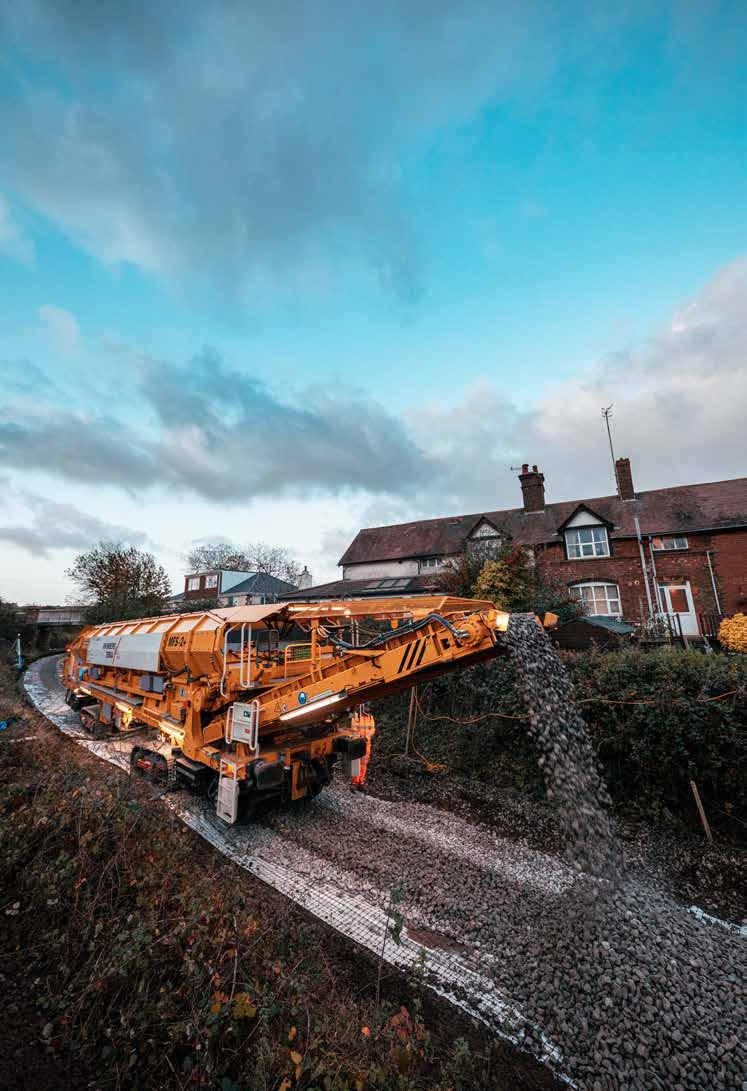
For a conventional two-track railway, the normal option is to use an adjacent track for the transportation of spoil and bottom ballast, with top ballast being tipped from hopper wagons.
GRAHAME TAYLOR
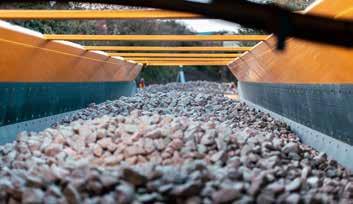
The tricky bits
Of course, not all of our railway network is laid in convenient two-track chunks. There are other bits of infrastructure that get in the way. For many historic, geographic and economic reasons, there are sections of single line and there are island platforms. There are tunnels and complex layouts. These types of locations have always been a challenge. The amounts of ballast required remains just as high, but moving it into the right place has often meant the use of multiple items of machinery.
More plant means more chances of failure, which leads to more fitters along with their support vehicles. It requires more staff to be within the working site exposed to risk. Apart from productivity issues, repeated movements over carefully prepared sub-bases can cause long-lasting ballast-memory problems.
How can all this be avoided? Up to about three years ago there was a wellused strategy - just defer the items as they’re too difficult. Kick the can down the track for a while for someone else to sort out. However, since 2017, there really has been an alternative - a simple alternative, a cost-effective alternative. The Rhomberg-Sersa system
Rail Engineer covered the RhombergSersa system in issue 180 (December 2019). In summary, it involves an inline excavator, an MFS+ high volume ballast handling machine and a UMH (Universal advanced Materials Handling). The use of all these components in renewal sites with difficult access was explored.

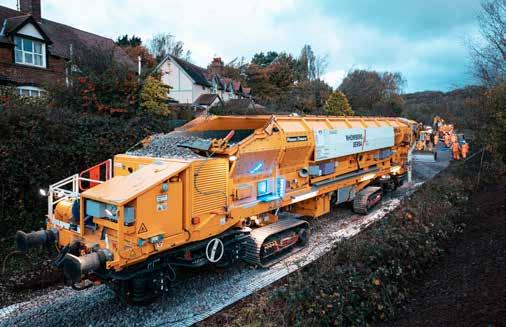
This current article will look in detail at the MFS+, the ballast moving machine which, amongst its other purposes, can be used as an ultra-high-capacity dump truck.
The machine is derived from the Plasser & Theurer materials-handing wagon - the MFS. As well as being compatible with a rake of MFS wagons in all their functionalities, the MFS+ machine has the added advantage of a caterpillar track system. This is underslung clear of the rail bogies. When brought into operation, it lowers the tracked assembly onto the sleeper ends and raises the whole body of the machine clear of the rails.
All the tracked assemblies are independent of each other but are linked by coordinated hydraulics. These are controlled by an operator via a remotecontrol unit. The MFS+ can be moved forwards, backwards and it has an element of steering. Its load can be discharged via a conveyor at one end or it can be loaded for later discharge into adjacent MFS wagons. It is unaffected by normal railway cants or gradients and, once clear of the rails, it can be used on any firm surface.
Other large dumpers?
At this point it’s worth doing an internet search for a 60-tonne dumper. They do exist. There are machines by Volvo, Caterpillar, Komatsu and others. What do they have in common? They are all vast, huge, enormous. Would they fit within a railway structure gauge? Most unlikely. Could they be manoeuvred? No. Look at the tyres. What would they do to the formation? Untold damage! These machines are brilliant for opencast mining sites. A track renewal is not an open cast mining site - or, at least, it shouldn’t be.
On the other hand, the MFS+ has size - enough for 60 tonnes of ballast - but its bulk is carried on four sets of low-earthpressure tracks. Its stability is maintained with hydraulics that ensure an even distribution of weight but also allow a degree of steerage. The whole wagon can be raised off the rails and then guided towards a works site. The MFS+ can travel loaded to deliver materials or it can travel empty for loading.
Once away from the railway line, it becomes an independent materials handling piece of kit. Railway logic for the past 200 years has insisted that a worksite is entirely linear. For the MFS+, once clear of its train, there need be no linearity. There’s just a worksite - maybe a bit narrow at times.
Past ‘big machines’
Perhaps it’s time to take stock before being carried away by all this excitement. At 60 tonnes tare the MFS+ high volume ballast handling machine is a big machine. Experienced railway professionals will raise an eyebrow and mention a few other ‘big machines’ that have been dropped on the railway industry and which have rarely been used. Isn’t this just another in the series?
Well, the MFS+ has been working continuously for the past 18 months, having been imported to the UK just three years ago for evaluation. The MFS+ isn’t just a big machine confined to one specialist task. With imagination and an understanding of its capabilities, it is
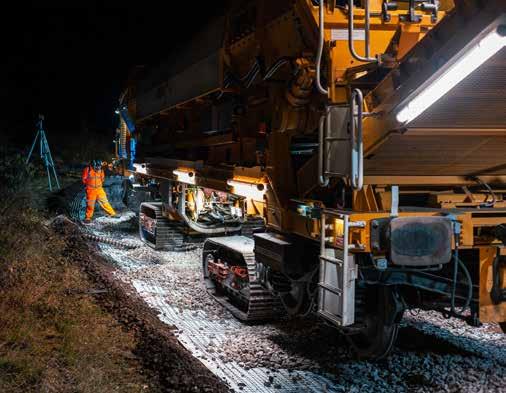
possible to vary its use according to local circumstances.
The MFS+ isn’t just a big machine confined to track work either! Consider, for example, an isolated, long retaining wall that requires backfilling. In the past, this would have involved a rake of open wagons and a fleet of 360° excavators scratching out loose ballast as best they could. It’s a long and tedious job with multiple machines and train movements. Of course, not all of the ballast would land up being off-loaded. There’s always an element of waste that goes back to the quarry - and for which no financial credit is given.
Potentially, with the right logistics, there can now be a non-stop continuous operation. The materials handling

doesn’t stop. The shuttle process travels backwards and forwards so the backfill can continue without interruption.
Tackling the very difficult
Railway renewals and projects are, without doubt, challenging, even the straight forward ones can prove to be just too much. The tough ones as indicated above can just be too daunting. However, by using systems which include plant such as MFS+, some of the more common risks can be eliminated. The plant travels in a single direction. Volumes moved are higher per trip – hence there are fewer journeys. The need to continually change plant orientation is eliminated, saving time and avoiding common safety risks such as people coming into contact with moving machinery.
Furthermore, on a typical tunnel renewal for example, once the excavation is complete, the same plant can continue on, thereby avoiding the risks associated with shift and plant changeovers that so often become the Achilles heel. Resource demand is lower and operations are delivered more quickly and safely, which leads to the chances of failure being dramatically reduced.
Permanent-way work requires experience, but now that knowledge can be used to develop novel and efficient ways of handling large amounts of ballast on or near the tracks, or anywhere within the railway boundary in fact. It just requires some imagination and flair - qualities that really do exist in the railway industry, as Rhomberg Sersa has amply demonstrated.

Our comprehensive fl eet consists of:
MFS+
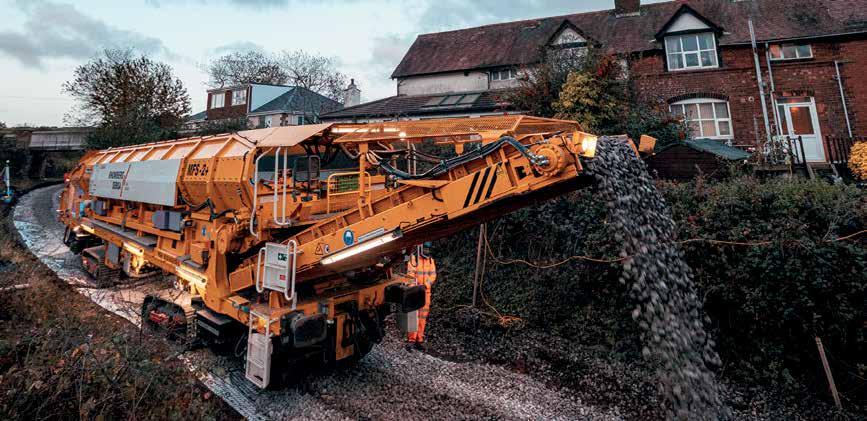


Material Conveying and Hopper Wagon (rail and crawler modes)
MFS 2000 Multi-Speed Conveyor System
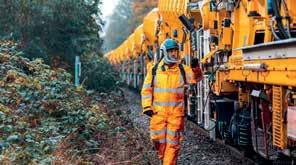
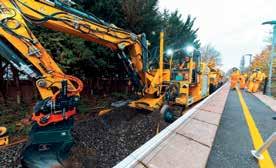
400m 3 per hour and 6mtr belt reach ITC BL4 High capacity in-line Road Rail Excavator
UMH Universal Material Handling Wagon
The Rhomberg Sersa Machine Group is a unique and specialist in-line excavation and re-ballasting system that represents a step-change in track renewals in the UK.
Using this system Rhomberg Sersa Machine Group has the capability to deliver in-line excavation, parallel working, single line and single bore tunnel working and a production line approach all supported by a dedicated, experienced and multi-skilled team comprising:
Multi-skilled On-Track Machine operators Safety critical staff (SWL1/2) S&C and plain line renewal On-Track Machine maintenance staff Full technical support Planning capability cradle to grave










